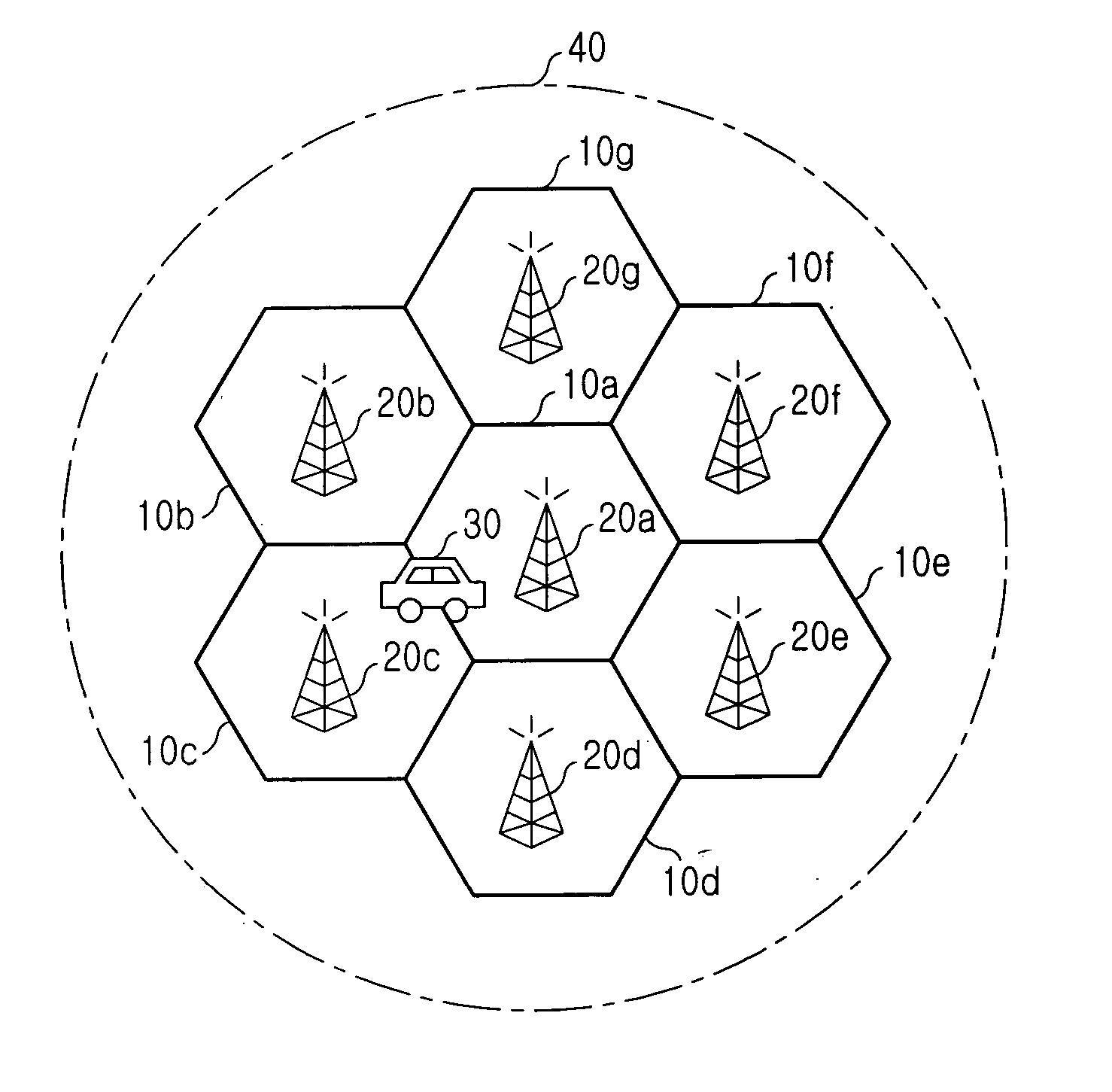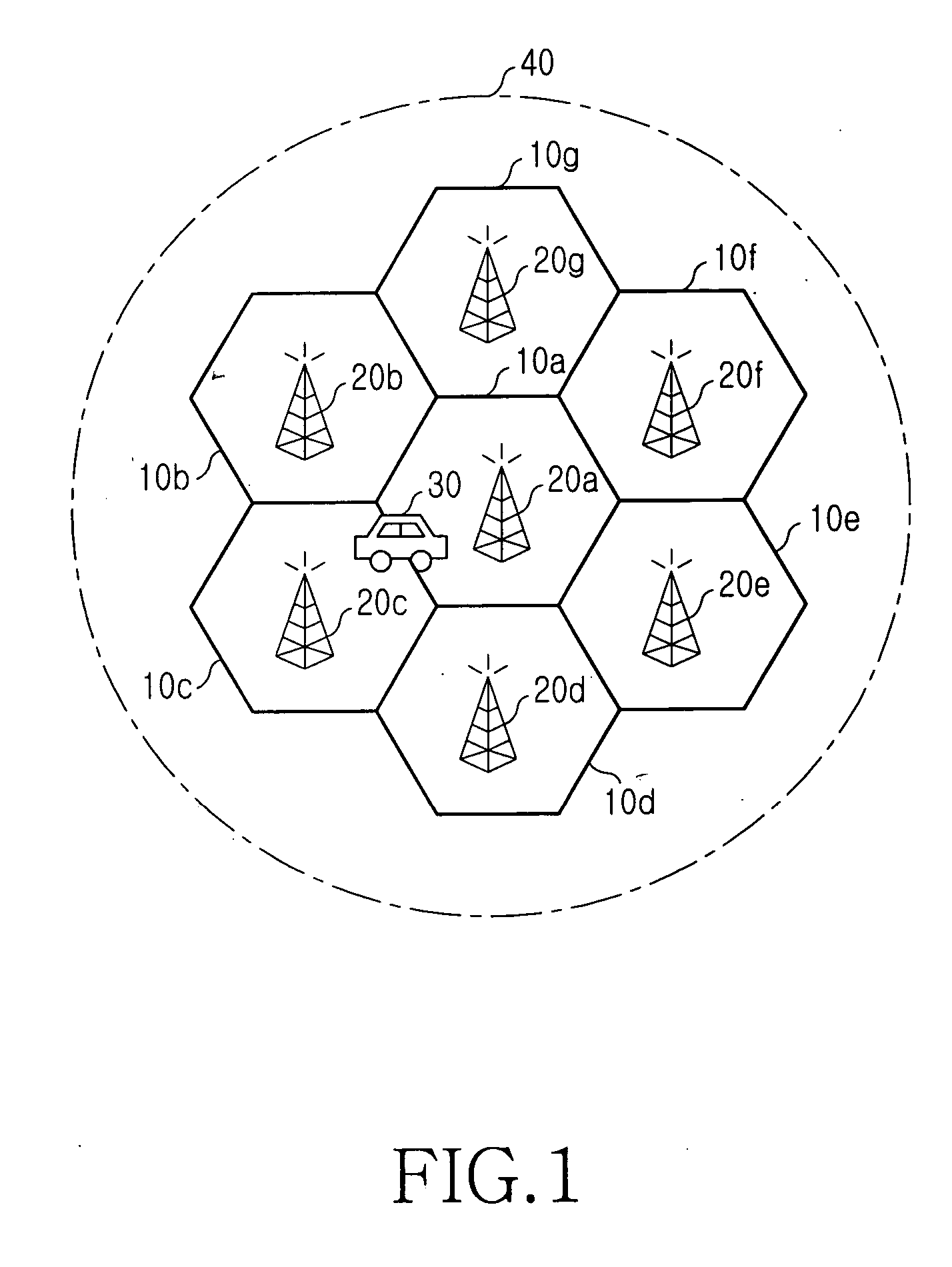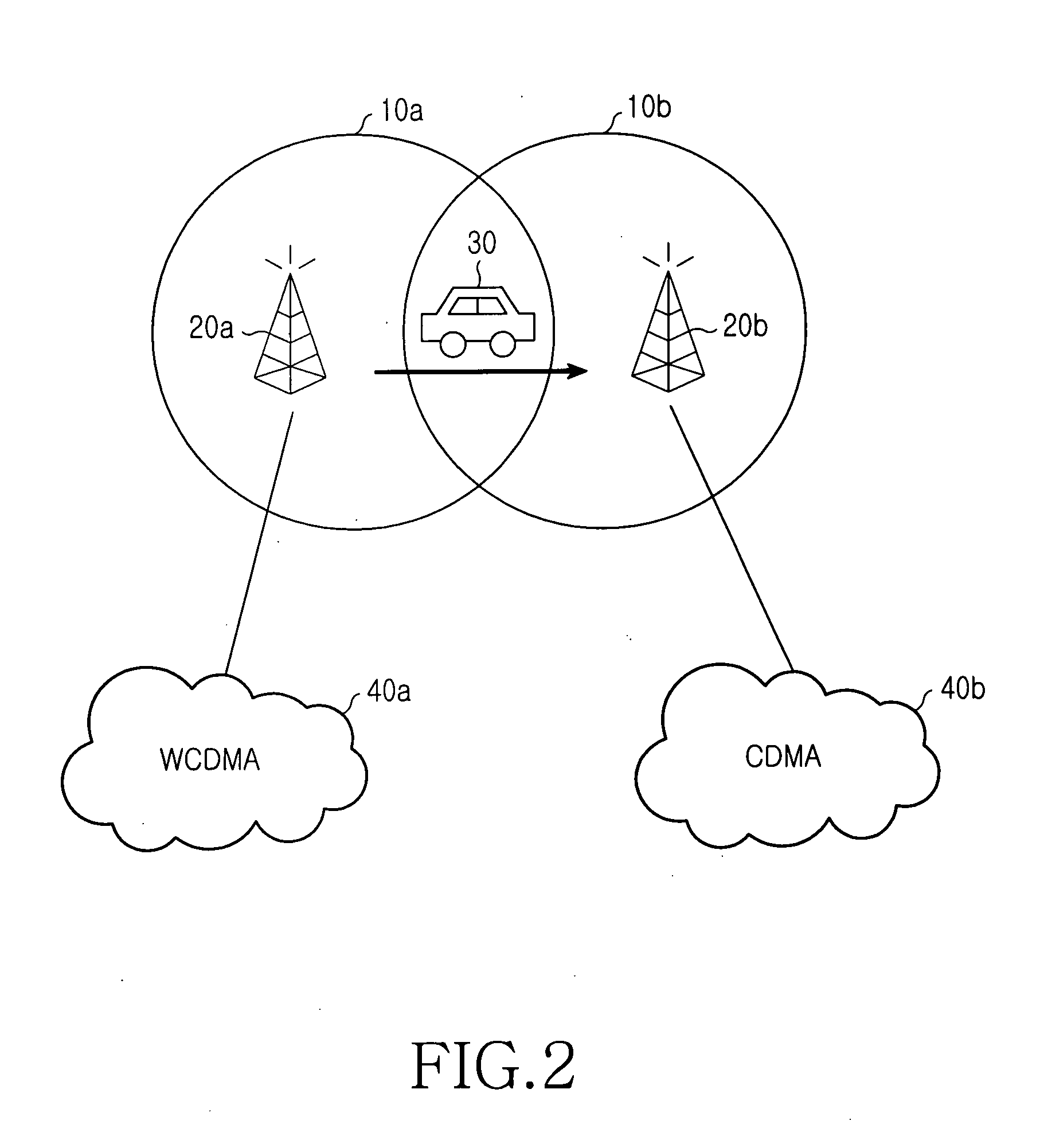Method for handover between different type MMMB systems
- Summary
- Abstract
- Description
- Claims
- Application Information
AI Technical Summary
Benefits of technology
Problems solved by technology
Method used
Image
Examples
first embodiment
[0107]FIG. 9 illustrates a view for explaining a handover process between different types of systems in accordance with the present invention.
[0108] Referring to FIG. 9, a mobile terminal is in communication with a source system while turning off modules related to a different type of system (a target system) into which the mobile terminal performs handover, that is, deactivating a target system mode (step 502). The first step (step 504) begins with the entrance of the mobile terminal into the border cell B. In the first step (step 504), a source system controller (RNC in the WCDMA system and BSC in the CDMA system) instructs the mobile terminal to enable the modules related to the target system, that is, activate the target system mode before handover is performed. In the second step (step 506), the source system controller waits for a predetermined time T1. The predetermined time T1 is a time which is predicted to be required for the mobile terminal to activate the modules related...
second embodiment
[0114]FIG. 11 illustrates a view for explaining a handover process between different types of systems in accordance with the present invention. Here is shown a process of performing the handover from the WCDMA service area into the CDMA service area by way of example.
[0115] Referring to FIG. 11, a mobile terminal detects a signal transmitted from a dummy cell C of a target system, for example, a signal of a CDMA downlink common channel (P-CPICH) in a case where the target system is the CDMA system. If the signal from the dummy cell exceeds a predetermined threshold, the mobile terminal activates modules related to the target system (step 602). Once the modules related to the target system are activated, the mobile terminal continues to monitor the signal from the dummy cell. If the intensity of the signal from the dummy cell is greater than the intensity of a signal from a source system, the mobile terminal performs handover into a cell of the target system, which is co-located with...
PUM
 Login to View More
Login to View More Abstract
Description
Claims
Application Information
 Login to View More
Login to View More - R&D
- Intellectual Property
- Life Sciences
- Materials
- Tech Scout
- Unparalleled Data Quality
- Higher Quality Content
- 60% Fewer Hallucinations
Browse by: Latest US Patents, China's latest patents, Technical Efficacy Thesaurus, Application Domain, Technology Topic, Popular Technical Reports.
© 2025 PatSnap. All rights reserved.Legal|Privacy policy|Modern Slavery Act Transparency Statement|Sitemap|About US| Contact US: help@patsnap.com



